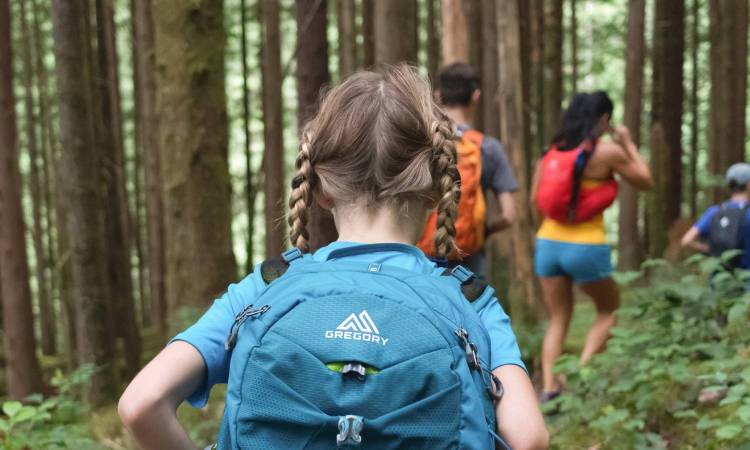

Chess is one of the most popular board games of all time. Whether you agree or not, it is known as a game for intellectuals, but with some practice and study, anyone can play it—even young kids.
You wouldn’t know it from my rating, but I’ve been playing chess for 30 years, and I’ve been passing on my love for the game to my kids since they were four. They took to it very quickly, and two years later, they can play semi-competent games against me, one another, and online AI programs.
Studies have found chess can help boys and girls improve academic performance, particularly in reading and math. The game also can teach kids other useful life skills, like critical thinking, resilience, perseverance, risk analysis, independence, and how to own up to and learn from their mistakes, says Mike Klein, International Chess Federation Master, and Chief Chess Officer for educational chess learning website ChessKid.com.
But beyond that, small kids should learn how to play chess because it’s fun.
There are a number of tools and programs on- and offline to help children of almost any age learn how to play chess. And if you don’t know how to play either, any of these resources will help you learn right alongside them.
Learn the basics with StoryTime Chess
StoryTime Chess is a child-focused full game set that teaches younguns piece movement and basic strategy. It comes with an accompanying storybook that explains chess concepts using friendly tales, colorful characters, and easy-to-remember mnemonics. (I can’t move a knight anymore without saying “gallop, gallop, step to the side”, because it’s such a perfect description.) Children can follow the storyline and engage in activities so they feel comfortable moving pieces on the board. There are even live courses you can sign your children up for further instruction.
[Related: Use your phone to master the game of chess]
Once your kids have a basic understanding of the game on the starter board, you can introduce the Strategy Storybook, which features another batch of stories, this time focused on openings, pawn play, learning how to make plans, and understanding your opponent’s. This second level also includes more exercises and activities to help reinforce each concept.
After two years of StoryTime Chess, my kids are starting to understand opening strategy, the math behind trading pieces, and keeping pieces both mobile and protected. They also regularly request StoryTime Chess chapters at bedtime, reinforcing the lessons even when they’re not actually playing.
StoryTime Chess is for kids three years old and up, and it starts at $49.99.
Expand their skills on ChessKid.com
ChessKid.com is an online chess platform designed specifically for children and has an entire curriculum especially designed for educators and chess coaches. The goal of this site is to make teaching and learning chess easy so it can be ubiquitous in elementary school classrooms.
On the website or app, kids can play each other online, try their skills against leveled AI bots, or practice using one of the many learning tools available, no matter how much or how little they know about the game. The site also features video lessons for all levels, follow-up exercises to reinforce concepts, tens of thousands of chess puzzles, and analysis boards for kids to assess their own games and identify areas for improvement.
Letting the little ones interact with online platforms can be scary for a parent, but Klein says safety is priority one, two, and three at ChessKid.com. Personal information is completely private, usernames are either randomized or approved by the site’s team to ensure they contain no objectionable content, and chat features are restricted so kids can’t engage in toxic or unsafe behavior. In addition, parents, coaches, and teachers can also link their own accounts to the kids’ so that they can keep track of what they’re doing online, and even play against them.
Basic accounts with access to limited content are free, but for a monthly or annual subscription, your child can unlock the site’s entire educational library.
So far, my kids have been just fine with the free accounts on the site—it lets them solve puzzles, practice against leveled bots, and play games against real kids at their same skill level, which is what they’re most excited about. After each game, we sit down, review the game, and talk about what they did well and what they can learn and improve for next time.
ChessKid.com is available on your browser and it’s free to download for iOS and Android. Annual subscriptions start at $49.99.
Practice with Mom and Dad
For my kids, there’s nothing better than playing a game of chess against Dad. They can’t beat me yet, but I’m sure it won’t be long until that’s no longer the case. In the meantime, I struggle with finding a way of playing them and teaching them lessons, while at the same time avoiding throwing the game and destroying their love for chess.
Rather than focusing on winning, Klein recommends helping your kids aim for small, achievable goals each game. For example, my kids’ objective might be getting all of their knights and bishops out of their starting square in the first eight to 10 moves, or maybe only survive 20 moves while playing against me at my hardest. Setting these milestones can help them understand that chess should be more about the process than the actual outcome.
Another tactic is to spend time practicing specific parts of the game, rather than playing full matches. These days, for example, we’re learning checkmating patterns—I’ll set myself up with just a king, give one of my boys two rooks, and have them work on the ladder checkmate.
Later, when we get into a full game, I’ll focus on putting myself or them into one of the scenarios we’ve practiced, which not only gives them the opportunity to execute the moves but also to learn how to recognize patterns when they appear in-game.
Explore the world of local chess clubs
Online chess is a great way to practice but to get the full experience, you need to play over the board, looking your opponent in the eye. As one of the most popular games in the world, you will most likely not have a hard time finding a chess club near you.
In the United States, the US Chess Federation is the governing body that rates players, but Klein recommends starting your in-person chess journey at a more local level. Most states have a chess organization that lists all of the city and regional clubs (many of which welcome kids), so it’s a good idea to check those out first.
[Related: Artificial intelligence is taking computer chess beyond brute force]
In addition to the in-person play and coaching available at these local clubs, Klein says that another major benefit is that they’ll help you navigate the chess world. If your kids are interested in taking their skills further, a chess club can provide guidance on which coaches are best for your child’s age and level, how they can start taking the game more seriously, and what tournaments are appropriate for them.
Ultimately, finding a good local club can be a great way to level up, but it can also take what is only a fun hobby and turn it into an entire community for you and your kids.















